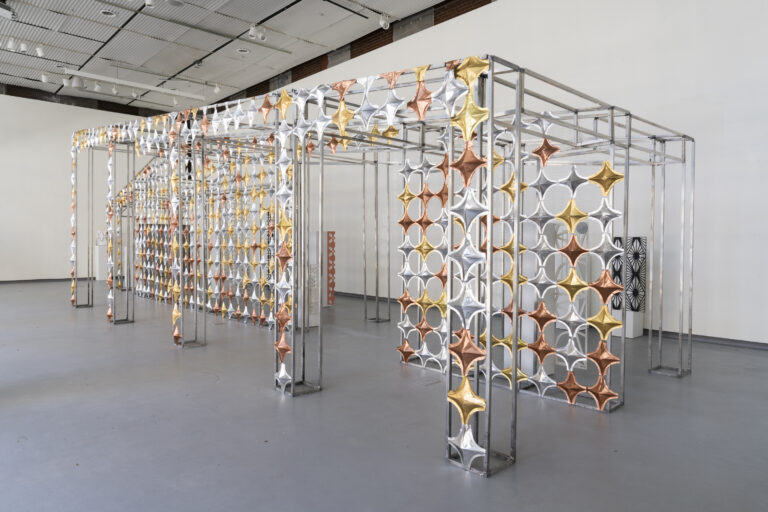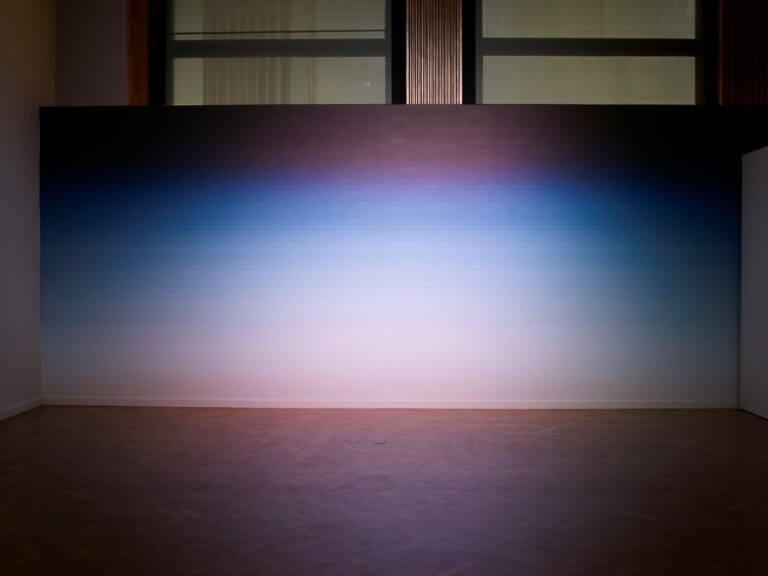
For Chicago-based, Puerto Rican–born artist Edra Soto, home is a psychic,
geographic place as well as a locus for gathering and community. It is also a
political space that defines who we are as civic and social beings. The complex
relationships between citizenship and migration, displacement and belonging,
inform the impressive suite of sculptural installations comprising
“Destination/El Destino: A Decade of GRAFT,” an unconventional survey
celebrating ten years of this ongoing project by Soto.

“Color is the most relative medium in art,” according to Josef Albers. Its relativity, along with the subjective nature of visual perception, forms the basis of the immersive light installations that comprise “Exact Dutch Yellow,” the most recent exhibition of Chicago-based collaborative Luftwerk (Petra Bachmaier and Sean Gallero), who transformed the fourth-floor galleries of this cultural institution into an oasis of complex optical phenomena.

